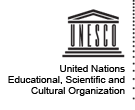Indigenous communities in Mexico have long since been excluded and relegated to poverty and marginalization, urgently requiring access to media platforms in order to freely express their voices and to participate in public decision making. Radio Huayacocotla La Voz de los Campesinos (Radio Huaya) has been able to contribute to the exercise of these rights, despite the adversities. Nahuatl, Tepehua and Otomi indigenous people and the Spanish-speaking peasants are the main actors who participate in the Radio. In rural and indigenous communities in Mexico there are a few women working in...
IPDC project priority: Community Media Development
Le présent projet intitulé Projet d’appui à la Voix des Femmes (Etincelle FM – Blitta) au Togo est une initiative de la direction de la Radio Etincelle et vise à renforcer les capacités institutionnelles, techniques et éditoriales de la Radio, et à surtout à renforcer son audience et son impact, en la rendant encore plus proche des populations rurales (à majorité féminine).
L’actuel projet, une initiative de la direction de Radio Etincelle, vise à promouvoir la forte contribution des médias à la construction de la démocratie et du développement à travers le pluralisme des opinions...
Au Maroc, la réforme de l’audiovisuel engagée en 2004, n’a pas débouché sur le pluralisme médiatique escompté : le paysage audiovisuel demeure à ce jour restreint aux médias du pôle public et aux médias privés à caractère commercial. La suppression du monopôle de l'Etat en matière de radiodiffusion et la création de la Haute Autorité de la Communication Audiovisuelle (HACA), n’ont pas abouti à un cadre juridique garantissant la liberté d’expression et le pluralisme et la loi en vigueur ne prévoit pas l’attribution de licence pour opérer des médias audiovisuels à caractère associatif ou...
In Bolivia, radio is one of the mainstays of grassroots communication, promoting the return to democracy and giving a voice to the Aymara, Quechua and Guaraní cultures. These cultures now receive information in their own languages, on topics of their interest, thereby empowering communities and making their reality more visible. However, the Afro-Bolivian culture (located mainly in the Los Yungas zone of Bolivia) has unfortunately not been represented this way. Their reality has little visibility in the private and public media, with very few Afro-Bolivian communicators in the media....
Rural and indigenous communities in Mexico are culturally and traditionally patriarchal and adult-centered. In this context, women are discriminated against, and girls even more so due to their age. That is why it is crucial to focus work on girls and on generating a culture of participatory work as opposed to focusing on adults and machoism. Despite the fact that the association Community Communication has worked with all age groups, it considers that working with children and youth creates a greater impact on the long-term social development of a community. Indeed, the integral...
This regional project involves community women communicators in Mexico, Nicaragua and Guatemala, with the aim of equipping them with increased knowledge and tools to help end violence against women in communities, particularly against indigenous women. It is based on common characteristics that affect the lives of indigenous women in their communities. The project has been devised by representatives of the Women's Networking Association of Community Radio Broadcasters in all three of the above countries, but will be coordinated in Mexico. Women communicators in these countries have made...
From Radio Farahalnas’ experience as a community radio, young men and women from underserved communities generally feel they are more marginalized than their peers in other areas. They say they are “stigmatized” by poverty, lack of education, and drug abuse and need a chance to prove otherwise and be able to provide or at least discuss solutions to issues that disadvantage their local communities and Jordan at large. With the support of UNESCO, this project seeks to create a core group of 15 motivated young men and women from 3 underserved communities (one in the eastern part of Amman, and...
Article 14 of Algeria's Information Act (no. 90-07 of April 3, 1990) provides for the freedom of all periodical publications. The abolition of the State's monopoly on print media brought in its wake a proliferation of publications. Several publications, however, are subject to the influence of political and business interests, which subverts their editorial independence. Furthermore, the State monopoly in the audio-visual sector continues to remain in force, after timid signs of opening up in 1990 and later in 1997. Although the absence of pluralism at the national level is compensated for...
Research conducted by various media development organizations has shown that women account for a mere 13 to 16 percent of the journalists in Liberia. A further survey conducted by Christian Media Center (CMC) showed that women hold a dismal one percent of clout positions in the media. The situation is appalling within community radio stations which are in the 15 political subdivisions of Liberia and provide information for over half of the overall population. Of 20 community radio stations assessed by FeJAL, only one has a female in a senior management position, and most of the women who...
Community broadcasting is one of the defining features of a plural and diverse media landscape. Among the characteristics of community radios are that they are owned and managed by communities; carry community-oriented programming; pursue a social development agenda; and use participatory methods in their activities. From different parts of the world, reports attest that community radio gives access and voice to marginalized peoples; empowers them to improve their lives and immediate environment; helps build capacities of societies to hold leaders accountable; helps to tackle poverty,...
